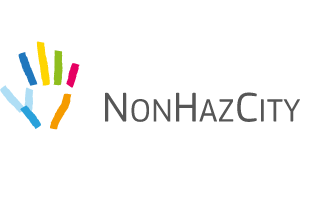UBC member cities of Riga, Pärnu and Gdansk are participating in an interesting project that aims to minimise the emissions of hazardous substances from the urban areas in our region.
The Baltic Sea environment assessment by HELCOM has shown that hazardous substances (HS) leaking into the marine environment is an issue of major concern. These leaks occur through three main pathways: industrial wastewater, municipal wastewater and stormwater. Consumption-related diffuse sources, including indoor dust, laundry wastewater and excretion of ingested pharmaceuticals, are more important sources for HS in wastewater than release from production-related point sources which nowadays are very few around the Baltic Sea (Gercken, et al. 2018).
The project NonHazCity aimed to demonstrate possibilities to reduce emissions of HS, focusing mainly on small scale emitters in urban areas e.g. private households, offices, schools and day-cares, recreational facilities, and businesses that are connected to the urban wastewater plants. The NonHazCity consortium consisted of eighteen partners from nine municipalities and expert organisations in the Baltic Sea Region.
NonHazCity implemented four work packages – the first one aimed at gaining new knowledge and evidence on HS occurrence in pilot municipalities participating in the project. Sampling and analyses were carried out in the wastewater and the aquatic environment of the pilot municipalities as well as in indoor dust from preschools; moreover, old and new preschool articles were analysed and, additionally, urine of volunteers of the household visited. The substances were back-tracked to urban sources and ranked according to their occurrence and level of concern. The findings were used for communication with the three stakeholder groups of the project: municipalities, businesses and private households.
The three other work packages were designed to initiate HS reduction by these stakeholder groups. Strategic chemical risk reduction goals were set as a part of Chemical Action Plans developed by the partner municipalities. These plans define concrete HS reduction measures for municipal entities, businesses and inhabitants together with strategies for their implementation. Information campaigns and trainings addressing the different stakeholders were carried out. A group of businesses using products containing HS in their operations were addressed and concrete reduction measures worked out (e.g. hair dressers, cleaning services, car repair shops, hotels and offices). Companies were reached by direct consultancy activities, seminars, training courses and information materials. Furthermore, intensive information campaigns addressing the inhabitants of the partner cities were implemented – public events, information materials, music competitions, (social) media campaigns, and direct consultancy at household checks were performed.
Now in its phase two, the project seeks to capitalize key elements of the preceding project as well as raising awareness on the hazardous chemicals in plastic.
